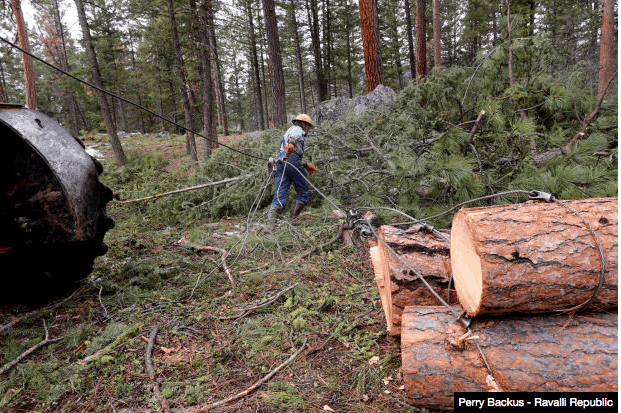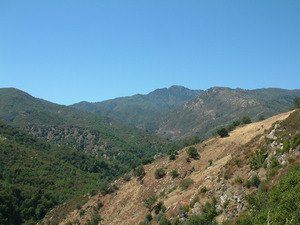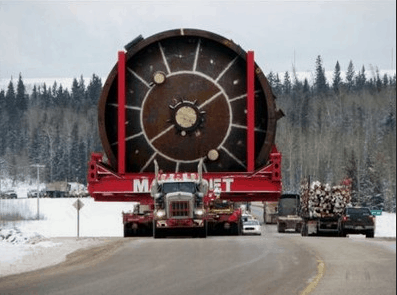
Recently, the discussion of collaboration and forest planning – at least on this blog – has focused on the processes at play with the Nez Perce-Clearwater National Forest forest plan revision. See here, here and here. The discussion and debate continues, as we can clearly see in these point/counter-point guest columns, which recently ran in the Moscow-Pullman Daily News. The first one is from Lee Rozen, who wrote his piece on behalf of the Moscow-Pullman Daily News editorial board. The second piece is from Gary Macfarlane, ecosystem defense director for Friends of the Clearwater.
We have this Friend, see, who’s stumped us
By Lee Rozen, for the Moscow-Pullman Daily News editorial board
http://dnews.com/opinion/article_245cf435-b50e-58a3-a9e4-98e2b09b816a.html
Sometimes, you have to wonder whether the Friends of the Clearwater can see the national forest for the trees. Generally speaking, we agree with much of what the Friends, and groups like them, stand for. We are skeptical whenever industry or local government tells us to just trust them because they are acting in our best interest.
But when government in the form of the U.S. Forest Service comes forward and seeks the informed advice of a wide variety of groups – both industry and Friends included – we don’t see sinister conspiracies lurking behind the next stump. Challenges, perhaps, but not conspiracies.
The Forest Service is trying a “collaborative” process to develop a management plan for the newly combined administration of the Nez Perce-Clearwater National Forest. That’s instead of proposing a plan and offering it up for industry, governments, recreationists and environmentalists to take potshots at, and eventually go to court over.
It seems that’s what Friends of the Clearwater want them to do. The Friends seem to be afraid their principles will be co-opted if they sit down across the table from industry, government, hunters, motorcyclists and ski-mobilers and negotiate the best way to reach an acceptable compromise on the use of this forest. More practically, they argue that industry and government can pay to have their representatives at the discussions but groups of volunteers with day jobs can neither afford the time off nor the travel expenses. As a result, the Forest Service has offered to help the collaboration occur online.
A plan for running a national forest poses a complex problem because it is so unclear what national forests are and what they should be. It’s pretty clear what’s intended for national parks, wilderness areas and national recreational areas. But national forests are different. They are supposed to support a mix of goals, many of which can be contradictory – logging and recreation, for instance. The Friends of the Clearwater, and other interest groups, should be working to make the “collaborative process” work for all, rather trying to shoot it down in hopes of “total victory” in the courts.
US Forest Service must follow the law
By Gary Macfarlane
http://dnews.com/opinion/article_1207ba0f-0a26-5e2d-a44f-ac89653a0672.html
Lee Rozen’s criticism of Friends of the Clearwater (Our View, written for the editorial board, March 13) is off base, misinformed and reflects a lack of understanding concerning our public land laws and the public involvement process. Had he contacted us, he would have learned why we believe the Forest Service is not following the law. It appears the agency has stumbled into a quagmire, under the guise of collaboration, with its new forest planning process.
The process the Forest Service is currently following on the Nez Perce-Clearwater National Forests plan revision circumvents existing law, creates a contradictory and confusing public involvement process and lacks accountability. For 40 years, the National Environmental Policy Act has governed public input and analysis of agency proposals. NEPA mandates that the first step of the public involvement process is to identify pertinent issues. However, this collaborative process is seeking to resolve issues before the genuine public involvement process even begins. How can the Forest Service resolve issues before they are properly identified?
Under NEPA, all citizens can participate equally. However, the new collaborative forest plan revision process – which has no statutory authority – creates two unequal classes of citizens. The E-collaborative invention funnels citizen comments from the second class through the first class citizen collaborative group. Why should a special working group have more input and be allowed to determine whether or how other citizen comments are used?
Furthermore, NEPA requires an objective analysis of alternatives before decisions are made. Thus, the integrity of NEPA is compromised when the agency reaches a deal or understanding with the collaborative forest planning group before the NEPA process even begins. NEPA must be more than a pro forma exercise. Can you imagine having a collaborative group decide the outcome of an election before the election begins in order to avoid the contentiousness of elections?
Another stated reason behind the new forest planning process is to save time and money. How is having two competing public involvement processes for national forest planning more efficient? Indeed, the Forest Service recently admitted the collaborative process would take longer than anticipated. We feel that such redundancy wastes time and money and also creates conflict and confusion. In fact, a member of the forest planning collaborative for the Nez Perce-Clearwater National Forests – Jonathan Oppenheimer of the Idaho Conservation League – recently termed the process as collective collaborative confusion at a presentation given in Eugene, Ore. Even proponents of collaboration find the new process fatally flawed.
Retired Forest Service fishery biologist and Moscow resident Al Espinosa stated in a comment letter on the new process, “The intent here is to avoid accountability by eliminating the appeal process and providing a phony pathway around the regulations and laws.”
He also noted the new planning process would circumvent the national interest. Removing accountability and de-legitimizing NEPA’s public involvement and decision-making process is not in the public interest. The Forest Service could have prevented scrutiny, confusion and distrust had the agency followed citizen suggestions made in an October meeting in how to lawfully proceed with the forest plan revision process.
If national forest management is to be determined by local collaborative groups, then existing laws like NEPA need to be repealed first. If the goal is to remove the ability of citizens to have judicial redress and to challenge agency decisions in court, then the Constitution must be amended. The new process for national forest planning clashes with the law. Friends of the Clearwater simply believes the Forest Service should be accountable to U.S. citizens and the law. We think the majority of Americans would agree with us.






